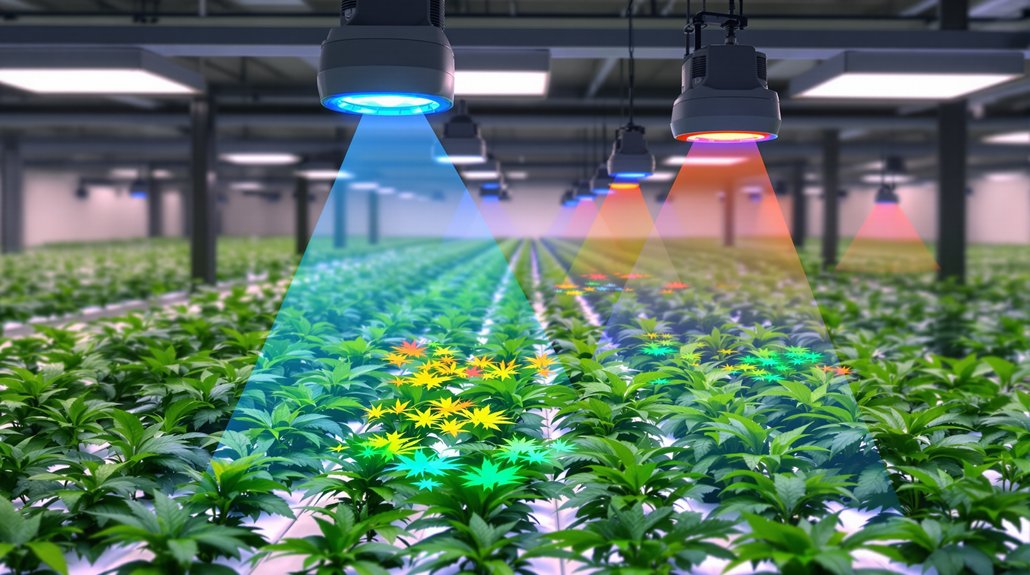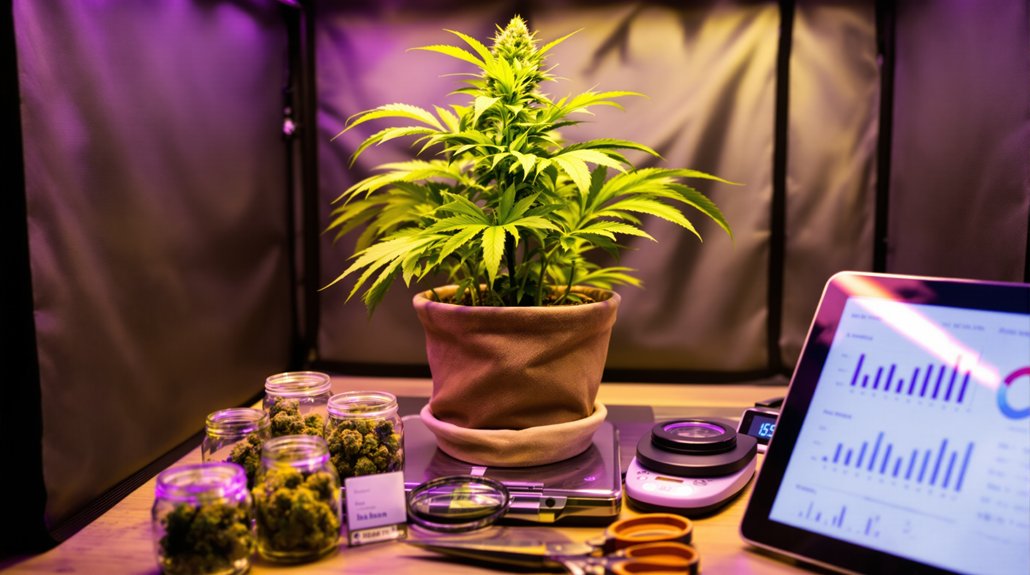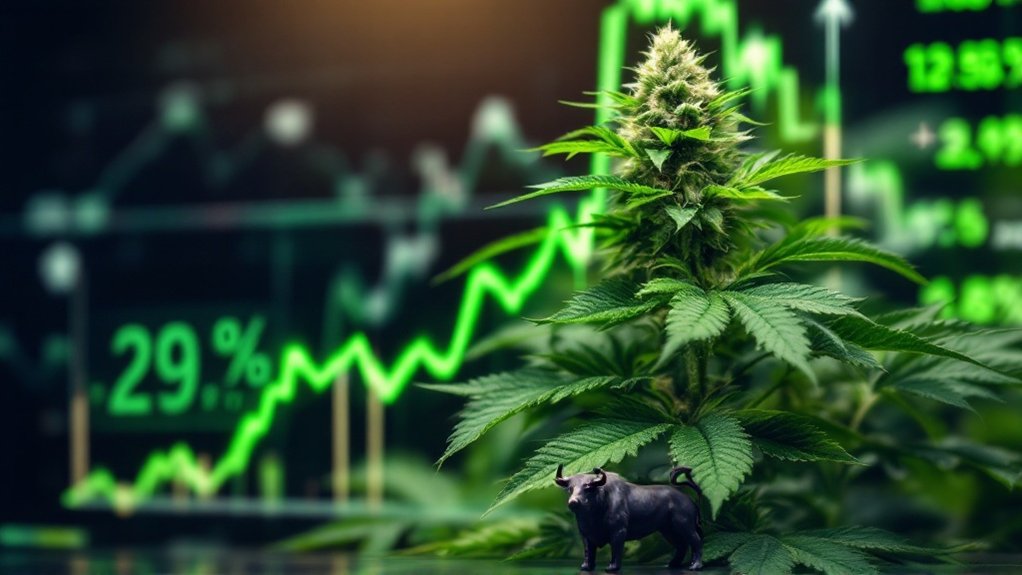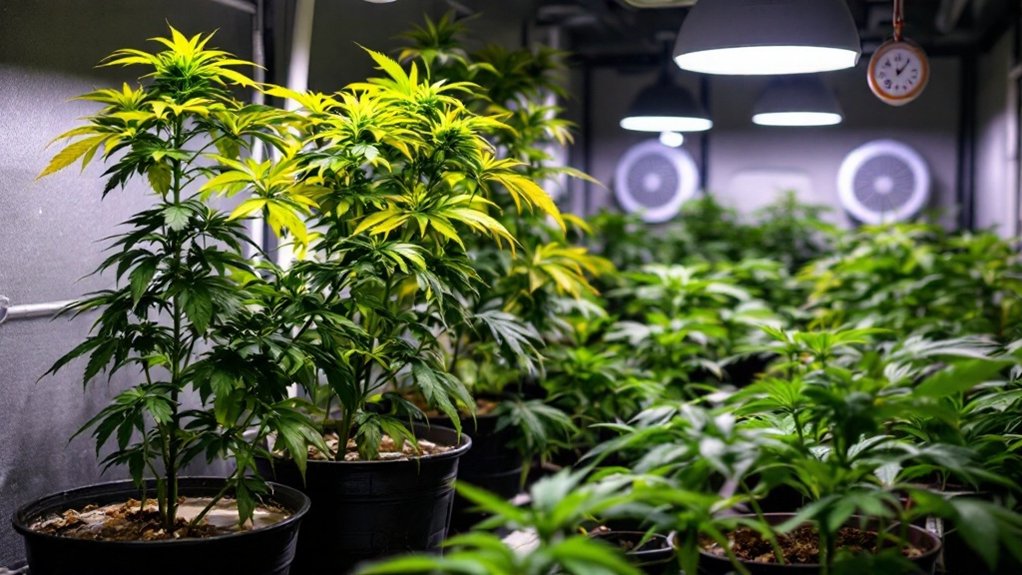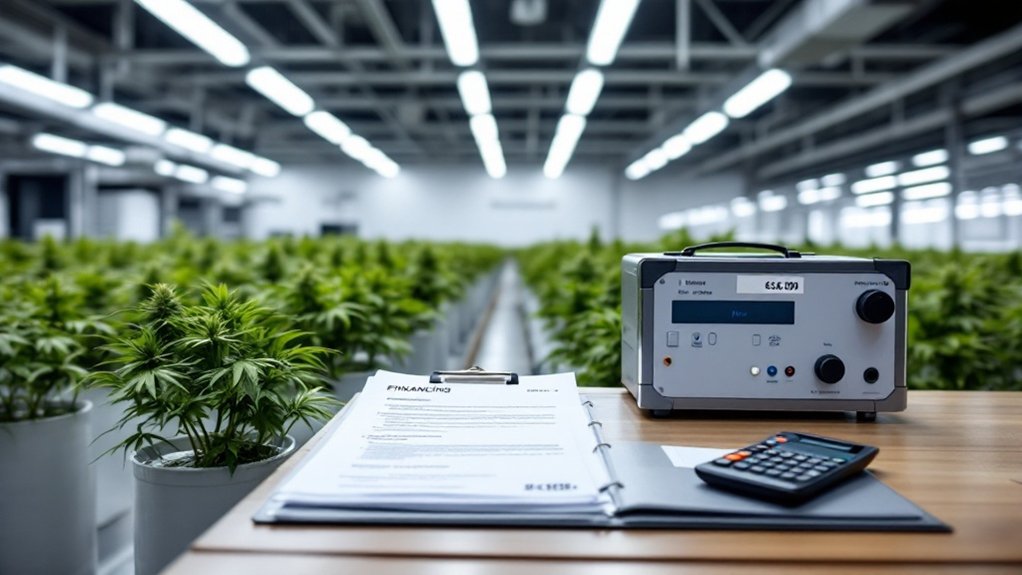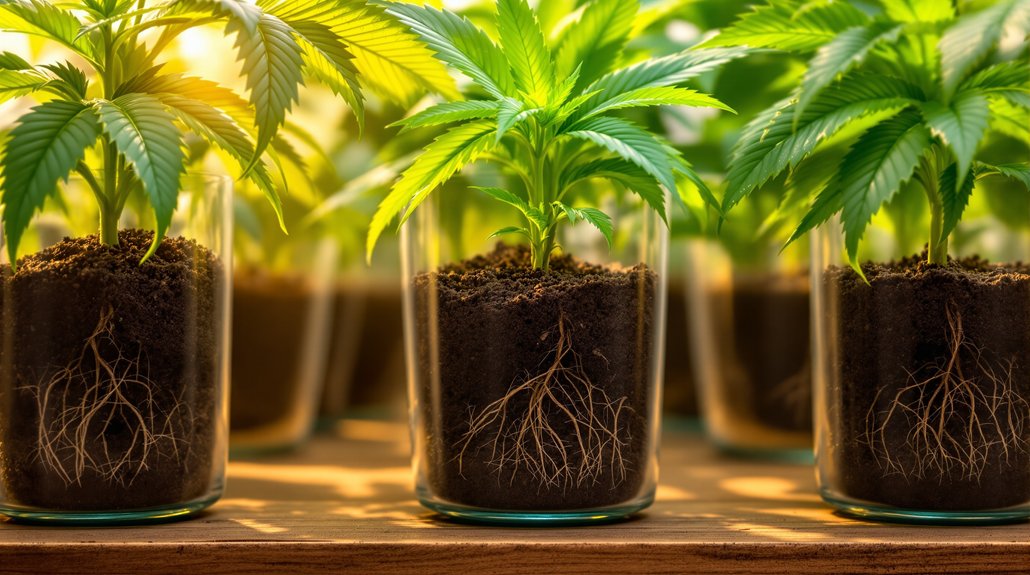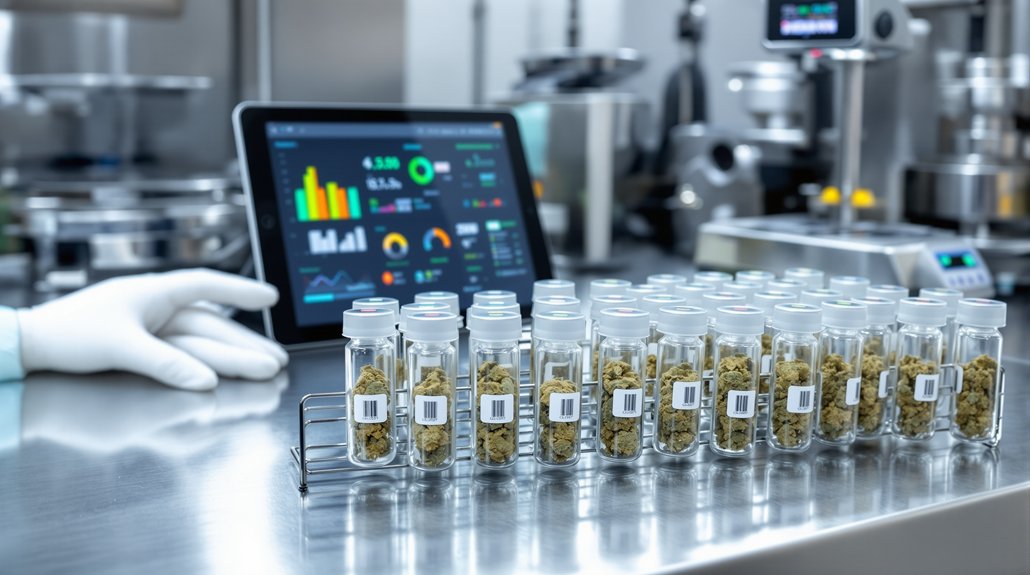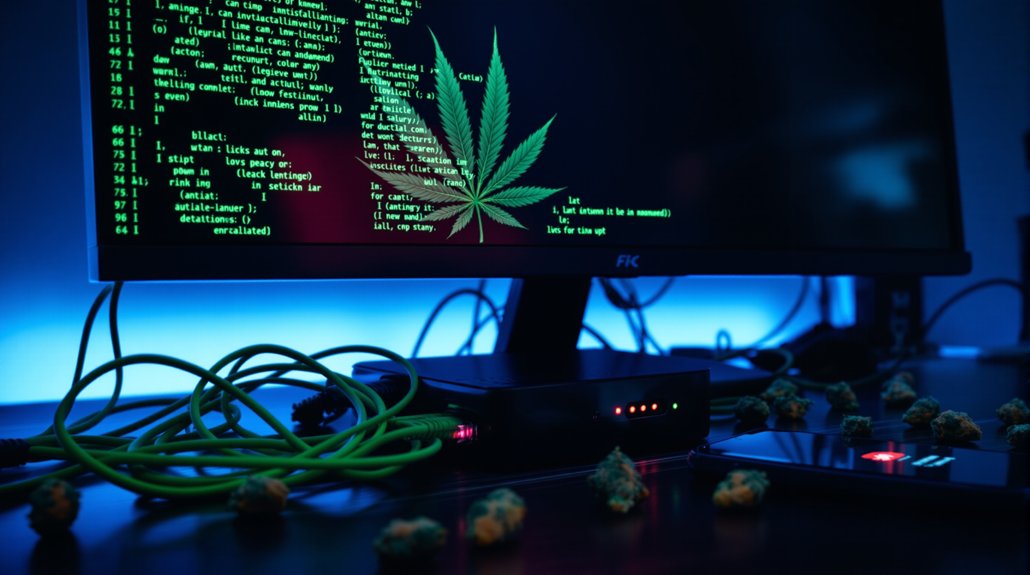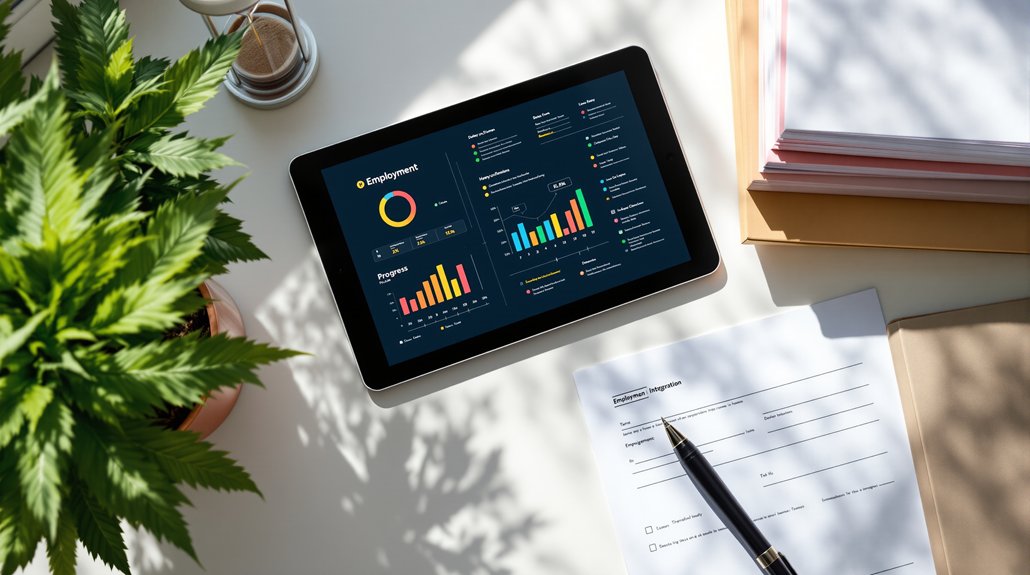AI-driven spectral analysis transforms indoor farming by detecting plant stress with over 90% accuracy before visible symptoms appear. Advanced hyperspectral systems capture 400+ spectral bands, enabling machine learning algorithms to assess chlorophyll levels, water absorption, and nutrient status in real-time. This precision monitoring reduces water usage by 98% while increasing yields up to 20% through automated resource optimization. The technology delivers sub-minute responses to plant stress signals, ensuring consistent harvests and minimizing crop losses. Further exploration reveals additional productivity maximization strategies.
Real-Time Health Detection and Precision Resource Optimization Through Spectral Technology
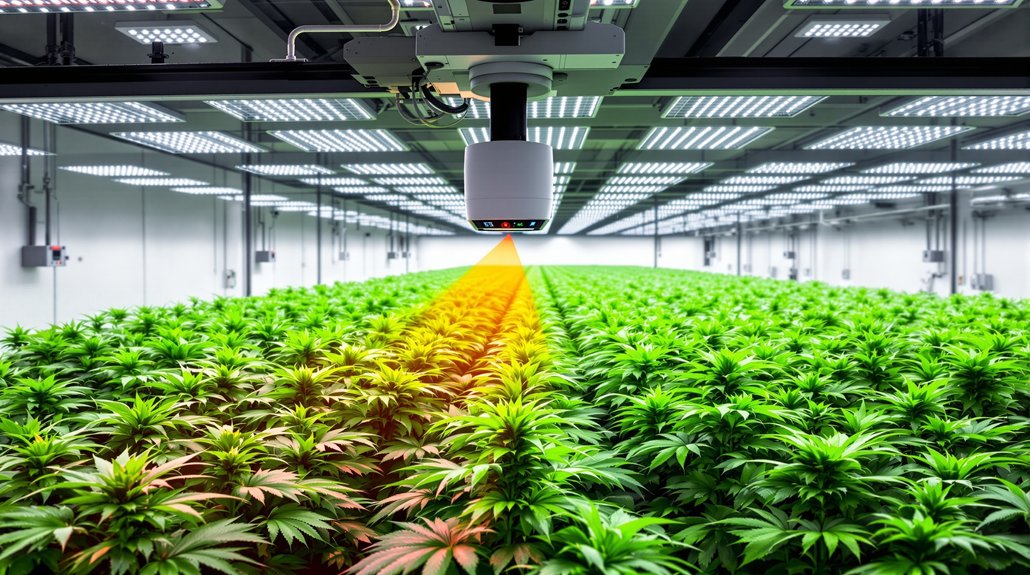
The integration of artificial intelligence with spectral imaging technology has revolutionized how indoor growers monitor crop health and allocate resources. Advanced hyperspectral systems now detect plant stress from diseases, pests, drought, and nutrient deficiencies days before visible symptoms appear, achieving over 90% accuracy in early detection. This capability allows growers to intervene rapidly, preventing widespread crop damage and maintaining consistent yields.
Machine learning algorithms analyze real-time reflectance data to assess chlorophyll content, water absorption, and nutrient status with remarkable precision. The technology enables hyperlocal, plant-level monitoring that maximizes irrigation and fertilization delivery, reducing water and fertilizer waste while maintaining ideal crop health. These platforms integrate seamlessly with existing farm management systems, allowing growers to combine spectral data with other operational metrics for comprehensive crop oversight. This technology contributes significantly to the cultivation technology market segment that’s projected to hold 28.6% of the cannabis tech sector by 2025. Automated systems respond instantly to spectral feedback, preventing both drought damage and waterlogging through continuous, non-destructive monitoring throughout entire growth cycles. By analyzing spectral signatures, these systems can differentiate between various types of plant stress and environmental conditions with unprecedented accuracy.
Maximizing Indoor Farm Productivity With Ai-Powered Hyperspectral Monitoring Systems
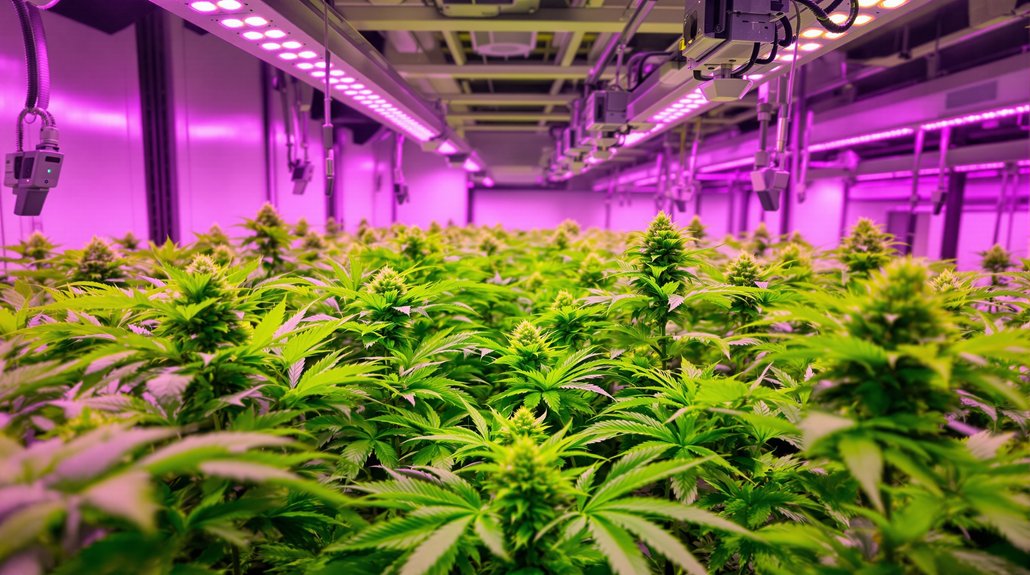
Building upon these foundational capabilities, modern indoor farming operations are discovering that maximizing productivity requires more than just detecting problems early, it demands thorough, AI-powered hyperspectral monitoring systems that transform raw spectral data into actionable cultivation strategies.
These advanced systems capture over 400 spectral bands from UV to infrared, creating detailed biochemical fingerprints of crops with 99.6% classification accuracy for species and condition assessment. Commercial facilities now process multiple terabytes of spectral data daily through distributed edge computing, enabling sub-minute responses to plant stress signals. Vertical hydroponic systems utilizing these technologies achieve 98% water savings compared to conventional agricultural methods.
Research demonstrates that integrating AI-guided nutrient management driven by hyperspectral analysis can increase yields by up to 20%, while reducing average crop losses by 82.7% through rapid detection and targeted interventions in commercial-scale operations. The technology’s lightweight design reduces equipment weight by 10% in drone-based monitoring systems, allowing for larger battery capacity and extending operational flight times by 50% for comprehensive facility surveillance.
Advanced push-broom spectrometer designs achieve sub-centimeter spatial resolution while maintaining spectral precision below 2 nm, enabling detection of individual leaf-level stress patterns across entire cultivation areas.
FAQ
What Is the Typical ROI Timeline for Implementing AI Spectral Analysis Systems?
The typical ROI timeline for AI spectral analysis systems in indoor agriculture ranges from 12 to 24 months across most deployments. Large-scale operations often achieve 150% ROI within two years, while smaller farms reach up to 120% ROI within two growing cycles.
Early adopters leveraging efficiency gains from optimized lighting, water, and nutrient management frequently see break-even returns within 1.5 years of implementation.
How Much Does Hyperspectral Imaging Equipment Cost for Small Indoor Farms?
Hyperspectral imaging equipment costs vary enormously for small indoor farms. Entry-level systems using commercial components start under $7,500, while industrial VNIR cameras range from $25,000 to $75,000.
SWIR models cost $45,000 to $90,000, with extended SWIR systems reaching $150,000 to $300,000. Cost-saving strategies include selecting VNIR-only cameras, utilizing DIY designs, purchasing refurbished units, partnering with universities, and leveraging grant funding to reduce initial investment requirements.
What Training Do Farm Operators Need to Use AI Spectral Analysis Tools?
Farm operators require extensive training across multiple technical domains to effectively utilize AI spectral analysis tools. Essential skills include operating hyperspectral sensors, interpreting spectral signatures for crop health assessment, and understanding machine learning outputs for decision-making.
Operators must master data management protocols, system calibration processes, and real-time coordination between spectral inputs and automated environmental controls. Training also encompasses basic statistical concepts, troubleshooting hardware issues, and integrating traditional farming knowledge with AI-generated insights.
Can AI Spectral Analysis Work With Existing Greenhouse Automation Systems?
AI spectral analysis systems integrate seamlessly with existing greenhouse automation platforms through REST APIs, connecting directly to leading climate computers like Priva and Hoogendoorn without requiring hardware overhauls.
These systems use containerized deployment and secure cloud infrastructure to guarantee compatibility with current IT frameworks. The modular architecture allows incremental deployment, working as an overlay to existing automation systems while maintaining secure, standards-compliant interactions through SSL/TLS encryption and OAuth 2.0 authentication protocols.
